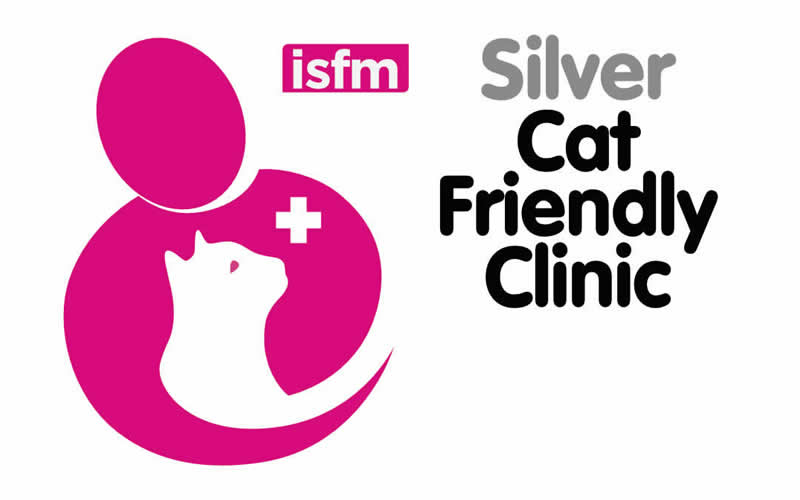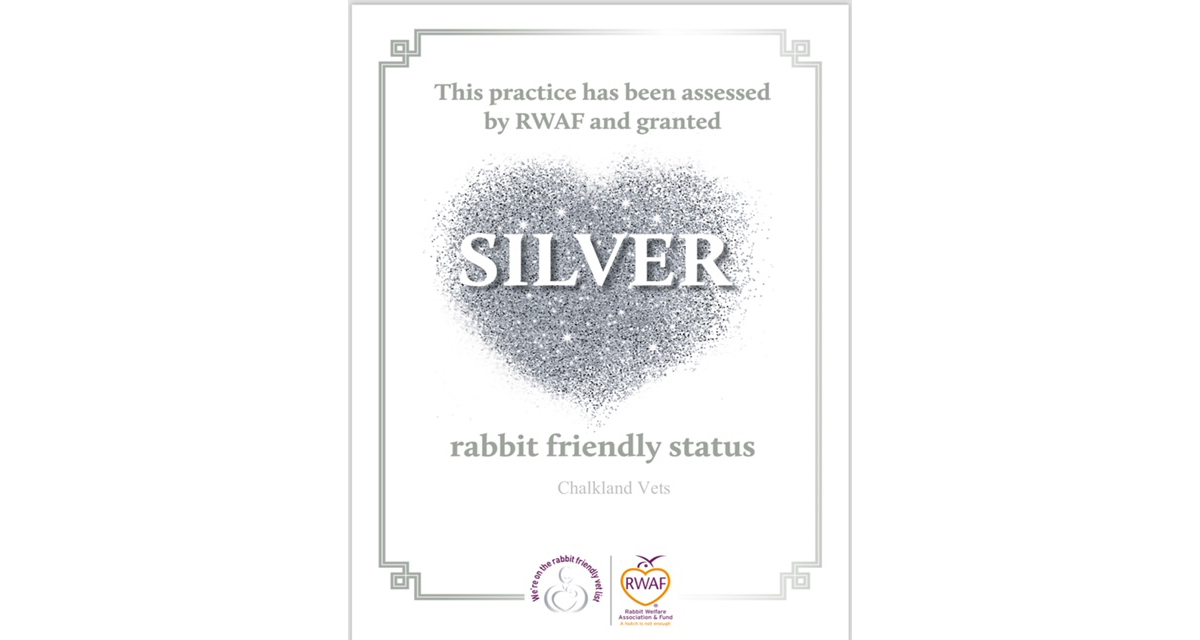Cat Health Information
On these pages you will find some basic advice about caring for you cat or kitten:

Vaccinations
Vaccinations are so important at preventing infectious disease in cats. The consequences of not vaccinating can prove fatal in some cases. There is still not treatment for viruses that infect cats today, so vaccination is the best way of preventing infection.
Cat flu is a common infection in the UK act populations. Although much less common, we also see cats that have been infected with Feline Leukaemia Virus, a frequently fatal disease. Both of these and other diseases can be prevented or kept to a minimum just by a simple vaccination.
Some of the diseases we vaccinate against (see below) are treatable but some can be fatal which is why we recommend keeping up to date with your boosters to help protect your cat. Vaccination is included in the Chalkland Elite Membership.
Vaccination Protocol for Cats
We recommend that kittens are given their initial course of vaccinations from nine weeks of age. This consists of two injections, three to four weeks apart. These should then be followed by a booster vaccination on an annual basis. We base our vaccine schedule on each individual cat’s lifestyle. Cats that live indoors are at extremely low risk of contracting leukaemia so we will only vaccinate against flu and enteritis. These are the infections that we vaccinate against
Feline Leukaemia Virus
- This virus is seen more commonly in younger cats.
- It can cause leukaemia (cancer of the blood cells), anaemia, and can even cause cancer to develop in other organs. The disease and related cancers are usually fatal.
- The Virus is found in cat’s saliva and is spread by mutual grooming and bites from infected cats. Indoor cats are much less likely to become infected as they are not likely to mix with other cats.
Cat Flu
- Two Viruses are responsible – Calicivirus and Herpes virus, both are highly contagious.
- Symptoms include sore runny eyes, sneezing, lethargy and ulcers in the mouth and eyes.
- Infected cats can become carriers and symptoms can recur.
- Feline Enteritis
- Causes diarrhoea, severe vomiting and is usually fatal.
- Kittens are most at risk.
Vaccination can be started at any age. If your cat has not been not vaccinated or their vaccines have lapsed, please contact us to discuss how we can help.
A full health check is performed at every vaccination. This examination can highlight any underlying health problems and gives the opportunity to discuss any concerns or queries you may have about your cat’s health.
Worming
Roundworms
Roundworms can be picked up in the environment and can also be passed from the queen to her kittens. Heavy worm burdens can cause weight loss, vomiting and diarrhoea. This can be very serious in young kittens. Infected cats pass eggs in faeces which can survive in the environment for a long period of time. Adult worms look like small strings of spaghetti but eggs and larvae are too small to see.
Tapeworms
The commonest is the flea tapeworm (Dipylidium Caninum) which affects both cats and dogs. It grows to around half a metre! Cats that have fleas are at risk. Infected fleas contain the larval stages of the worm. When a cat grooms they will ingest fleas which then develop into adults within the cat intestine.
Cats that hunt are particularly at risk from other types of tapeworm as mice and other animals can be a source of infection.
Hookworms
Hookworms attach themselves to the gut wall to feed on the cat’s blood.
Worm Prevention
We recommend worming kittens monthly from 6 weeks of age until 6 months of age. After 6 months old cats can be wormed once every 3 months, as an adult cat. If your cat is an avid hunter then we may recommend worming more frequently.
Treatments come in the form of tablets and spot-on’s. Please contact us for more advice.
Worming is included in the Chalkland Elite Membership.
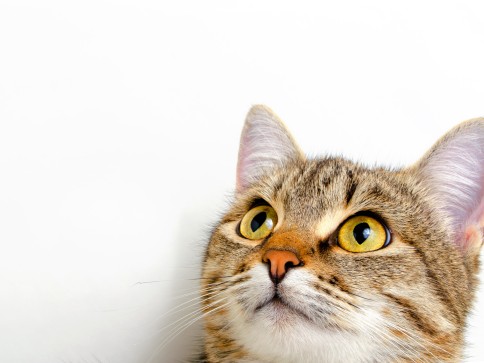
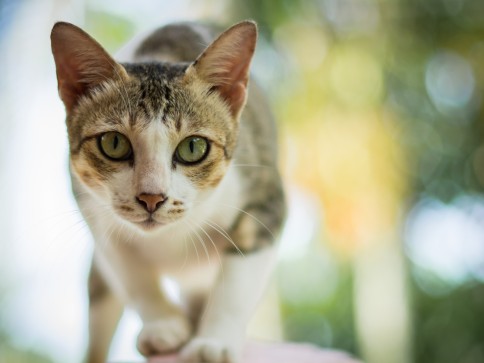
Flea Treatments
Only a small percentage (around 5%) of fleas will live on your pet, the majority (95%) live in the environment in carpets and soft furnishings. This means that for every flea you see, there will be 9 eggs or larvae in the environment! Adult fleas can lay 50 eggs per day (about 2,000 in a lifetime). Once an adult flea has taken a blood meal, she will mate and produce eggs which will drop off into the surrounding environment. These eggs hatch into larvae which move to areas away from light, such as under chairs and deep in the carpet pile.
The larvae hatch into adults when a nearby host is detected, such as your Dog (or even you!). The whole life-cycle then starts over again. The lifecycle can be as short as three weeks, so as you can tell, an infestation can rapidly arise in the right environment.
Outdoors fleas emerge in the spring and continue breeding until the frost arrives but our centrally heated home provide a perfect environment for them to continue breeding all year round.
Flea bites not only cause irritation but some pets can develop an allergy to their saliva. Fleas bite hypersensitivity is very common and it can result in severe itching and sores in the skin. Fleas transmit tapeworms so if your pet has fleas, they will also need treating for tapeworm.
Treating Fleas
Treating your pet – We can advise you on the best flea treatment for your pet. Options include spot-on’s, tablets or effective collars. Please remember that many products purchased over the counter are not effective in killing fleas. Please consult us about the most effective treatment for your particular cat’s needs.
Treating the environment – If you see adult fleas on your pets then it is very likely that there are lots more fleas waiting in the carpets and soft furnishings at home. Thorough vacuuming, particularly under furniture is essential. Environmental sprays to kill the egg and larval stages can be used, such as Indorex. Pet bedding should be put through the wash on a hot cycle. It is important to keep up to date with flea treatments to kill any emerging adults and prevent them from breeding and perpetuating the problem.
Please contact us if you have any questions regarding flea treatments for your pet.
Flea treatments are included in the Chalkland Elite Membership.
Neutering Cats
Cats are very efficient breeders! They can have 3 litters of kittens per year and females can be fertile from less than a year of age. The main reason for neutering your cat is for population control.
During the breeding season an un-neutered female cat will come onto heat every two-three weeks. When on heat, a female cat is usually extremely vocal. It’s not unusual for an inexperienced owner to think their cat is crying in pain.
When a female is on heat she will attract entire male cats and increase the risk of fighting (leading to wounds and abscesses) and infectious disease transmission (Feline leukaemia and Feline Aids Viruses).
Castrating male cats will reduce spraying and territory marking.
It is safe to neuter cats from a young age, there will be no adverse effects on their long term health and development.
We recommend neutering from 5 months of age
Microchipping Cats
Each microchip has a unique number which is registered with your pet’s and your details including your contact information. It is a simple and effective way of identifying your pet. It is the size of a grain of rice and is implanted under the skin between the shoulder blades. This unique number stays with your pet for life. There is a very low failure rate of microchips but we always scan them as part of the annual routine health check to ensure they are working correctly.
Special scanners are used by Vets, Animal organisations and some police stations. This allows the animal’s details to be obtained and the owner contacted straight away.
It is important to alert the microchip company if your contact details change, such as moving to a new house or changing phone numbers.
Microchipping is provided free for all members of the Chalkland Elite Membership.
Cat Dental Care
Cat’s mouths need looking after, just like ours. Bad dental health can lead to a number of painful conditions and even cause tooth loss. Although our cats do not demonstrate dental pain like we do, there’s no doubt that they do get toothache. Just because a cat is eating doesn’t mean they are not in pain. It’s surprising how much brighter and livelier a cat will become after a dental treatment.
Dental Disease in Cats
Dental disease starts with the build-up of bacteria on the surface of the. This can then lead to tartar formation and inflamed gums (gingivitis). As the inflammation progresses the supporting structures around the teeth and gums become weakened leading to painful wobbly teeth. Cats also commonly suffer from painful ‘Odontoclastic resorptive lesions. These are caused by areas of the tooth dissolving. It is not uncommon for affected teeth to break off completely. We routinely take dental x-rays of all the cats that undergo dental treatments because these lesions may be confined to the root and not visible on normal examination.
We pay close attention to oral health during our examinations. We may recommend dental work to treat existing problems or advise on prophylactic cleaning of the teeth to prevent problems from developing.
There are plenty of things you can do to help improve your cat’s dental health at home.
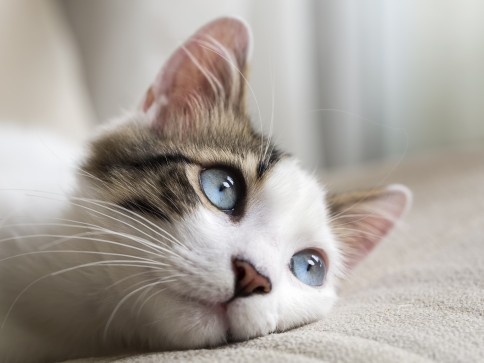
Brushing
It may seem like tricky task but brushing your cat’s teeth can be done. It’s easier if they get used to this as a kitten, but older cats can learn to let you do it too. You’ll need:
- Cat-safe toothpaste – Never use human toothpastes on your pets, as they can’t spit it out.
- Cat toothbrush, finger brush or microfiber cloth designed for tooth cleaning.
You’ll need to slowly get your cat used to having their teeth brushed. Follow these simple steps and remember to only move on when your cat is totally happy with the step you’re on:
- Give them a little of the toothpaste on your finger around the same time every day. This will get them used to the taste and smell.
- Gently touch their lips at the sides of their mouth, avoiding touching their whiskers. Start lifting their lips so you can see their teeth.
- Start to gently touch the outer surfaces of their teeth and gums to get them used to being touch around and inside their mouth.
- When they are happy with that, you can start to introduce a little toothpaste on your finger.
- Next, use the toothbrush, making small, circular motions on the outer surfaces of the teeth. Always brush gently and don’t brush directly on their gums.
Brushing is the best way to keep your cat’s mouth healthy but If your cat already has problems with their teeth and gums then brushing might make them sore and cause resentment. Please contact us for advice. Despite best efforts, not all cats will tolerate tooth brushing. Please be careful and avoid being bitten!
Dental Hygiene Gel
If your cat really won’t tolerate you brushing their teeth, you could try dental gels. You won’t need the brush with gel but you will need to put them on your cat’s teeth. Gels don’t remove plaque so they are not as effective as tooth brushing. They can help to slow down problems from developing by inhibiting bacteria build up.
Mouthwash Products
Like dental gels, mouthwash products that go in drinking water may help slow down the build-up of plaque by inhibiting bacteria in the mouth but they won’t prevent or reduce it like brushing will.
Diet – If your cat is prone to dental problems, we can recommend a specially formulated food, designed to help stop the build-up of plaque.
Cat Nutrition
Cats are obligate carnivores or ‘meat eaters’ and diets should reflect their higher protein needs. All cats require taurine, an amino acid that is important for normal heart function, vision and reproduction. Since taurine is found only in animal-based protein, all cats need meat-based diets to meet their nutritional requirements.
Adult cats should eat enough of a high-quality, nutritious food to meet their energy needs and to maintain and repair body tissues. The amount you feed your adult cat should be based on their size and energy output. Activity levels vary dramatically between pets and will play an important role in determining how much to feed.
There is an abundance of various different commercial diets for cats out there. It can seem a bit mind boggling trying to choose the right diet for your cat! It is fair to say that in most cases you get what you pay for i.e. good quality comes at a premium but there are good quality diets at relatively low cost.
Most of the supermarket cat foods are cheaper but they contain cheap ingredients like grains, wheat, highly processed sugars and other by-products.
If you can’t recognise the ingredients on the packet as being food do you really want to be feeding this to your cat?
- Buy the right diet for your cat’s life-stage – kitten, adult, senior.
- Feeding guidelines are just that, guidelines! Some cats will require less and some more than the stated amounts on the pack. Taylor the amount you feed to your cat’s needs.
- Kittens need smaller more frequent meals.
- Always read the label and avoid diets with ingredients you do not recognise.
- Avoid supermarket foods.
- A good quality manufactured complete food should provide your cat with the correct nutrients they need.
- Feed a diet that produces good formed faeces. It is worth noting that cheaper pet foods tend to vary their ingredients based on what is cheapest for them to buy in. These alterations in diet composition can cause an upset tummy in some cats.
For specific nutrition advice please contact us for a friendly chat








